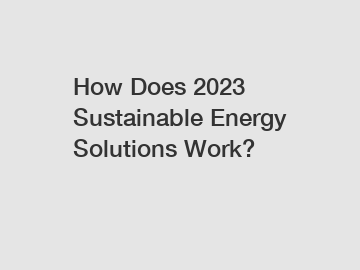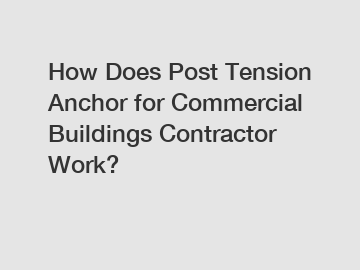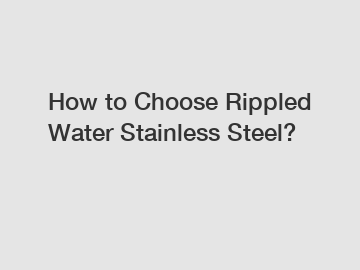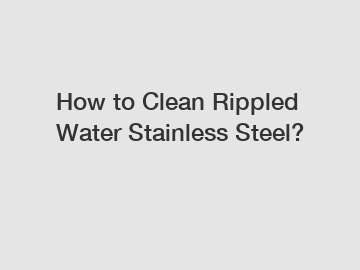How Does Injection Molding Foam Work?
Sep. 17, 2024
Understanding Injection Molding Foam
Injection molding foam is an innovative manufacturing technique that combines the principles of traditional injection molding with foam technology. This process enables the production of lightweight, high-strength components with intricate designs. Understanding how injection molding foam works can shed light on its advantages for manufacturers across various industries.How the Process Works
The injection molding foam process begins with the creation of foamable thermoplastic materials—usually polyethylene, polypropylene, or polystyrene—which are meticulously chosen based on the desired properties of the final product. These material pellets are fed into a heated barrel where they are melted and mixed with a blowing agent. The most common blowing agents include physical agents like gases that expand when heated, or chemical agents that produce gas through a chemical reaction.Once the material is sufficiently melted and mixed, it is injected into a mold under high pressure. The high pressure not only forces the foamable material into every cavity of the mold but also helps to keep the foam from expanding prematurely. As the molten foam fills the mold, it begins to expand due to the blowing agent. This expansion effectively fills the mold, creating a solid piece once it cools and solidifies.The cooling process is crucial; it solidifies the foam, ensuring it retains its newly formed shape and structure. Depending on the complexity and thickness of the part, cooling times may vary, influencing production cycle times.Key Advantages of Injection Molding Foam
One of the standout advantages of injection molding foam is its ability to produce lightweight parts without sacrificing strength. The foam's cellular structure provides excellent insulation properties while reducing the overall weight of the final product. This is particularly beneficial in industries such as automotive and aerospace, where reducing weight contributes to increased fuel efficiency.Additionally, injection molding foam allows for complex geometries that would be challenging to achieve with conventional manufacturing methods. This capability to produce intricate designs increases design flexibility, providing manufacturers with unprecedented creative freedom.Cost-effectiveness is another significant benefit. The process is highly efficient, often resulting in reduced cycle times compared to traditional injection molding. The ability to produce lightweight components in large quantities can also lead to savings in material and shipping costs.Applications of Injection Molding Foam
Injection molding foam finds applications across various industries. In automotive manufacturing, it is used for components like dashboards, panels, and various interior parts, where weight reduction is crucial for performance. In consumer goods, the technology is employed to create packaging materials that are both durable and lightweight, enhancing user experience while reducing environmental impact.Furthermore, the medical industry utilizes injection molded foam for packaging applications and even some device housings, benefiting from its lightweight, protective, and versatile nature. The versatility of this technique has made it an essential player in modern manufacturing processes.The Future of Injection Molding Foam
As technology advances, the potential for injection molding foam continues to grow. Research is being conducted into more sustainable materials and processes, with an emphasis on reducing waste and improving efficiency. With the increasing demand for lightweight, durable, and environmentally friendly products, injection molding foam is poised to play a significant role in the future of manufacturing.By understanding the intricacies of how injection molding foam works, manufacturers can leverage this technology to enhance product performance and design, streamline production processes, and ultimately meet the evolving demands of the market.If you want to learn more, please visit our website companies that make molds, chinese plastic manufacturer.
Further reading:Maximize Efficiency: Top Tips for Injection Molding Foam
What Are the Different Types of CNC Collets?
10 Questions You Should Know about Post Tension Anchor for Earthquake Retrofitting Projects
How Post Tension Anchors Enhance Earthquake Retrofitting
Top 5 Mirrored Stainless Steel Trends for 2024
How Mirror Stainless Steel Redefines Modern Design Trends?
How to Select Stainless Steel T Profile With Brushed Finish?Further reading:
Revamp Your Space: Benefits of Brushed Finish Stainless Steel T Profiles
High Intensity Gabion Box Custom Trends for 2024
Key Questions to Consider When Choosing a Custom Jewelry Design
Optimizing Retail Spaces with Post Tension Anchors ODM
Exploring Water Ripple Stainless Steel Texture Seamless 2024
Water Ripple vs. Smooth Stainless Steel: Texture Showdown
10 Things You Should Know about Organic Vegetable Gardening
162
0
0
All Comments (0)
Previous: Maximize Efficiency: Top Tips for Injection Molding Foam
Next: None
Related Articles
If you are interested in sending in a Guest Blogger Submission,welcome to write for us!










Comments